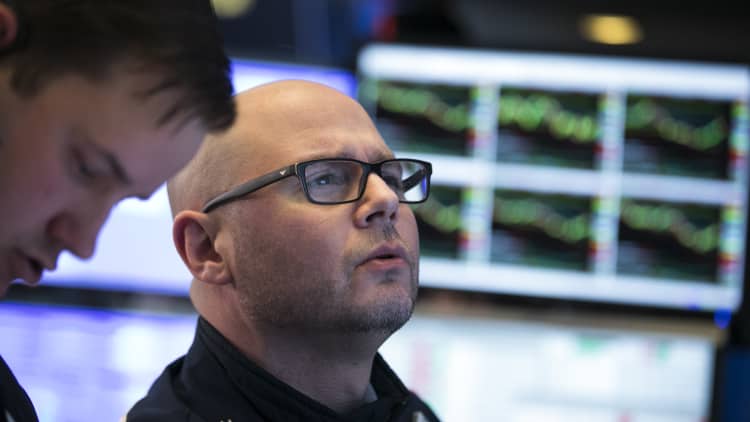
Now that the 10-year Treasury yield has topped 3 percent for the first time in four years, the bigger test is still ahead.
For the next move higher, traders are watching a level just below 3.05, where the 10-year topped out in January 2014. The 3 percent level is a psychological milestone, a wake-up call that interest rates are going higher.
The sense is that if the 3.05 percent level is broken easily, rates could move up quickly, and then the 3.20/3.25 percent level that some strategists have set as a year-end target could come into play much sooner.
In early Wednesday trading, the 10-year Treasury touched 3.02 percent, so this level is very much in play.
"Just getting to the finish line is not enough to draw attention to it, what it means longer term. I think we get toward 3.05, 3.10. That's when it's going to get everyone's attention," said George Goncalves, head of fixed-income strategy at Nomura. "Now it's about can we go beyond here, and does it start to bring into focus what higher rates do to other asset classes."
A quick move higher is also more likely to rattle stocks.
The 10-year yield is key not only for financial markets but for a range of business and consumer loans, including home mortgages.
Goncalves said that if the 3.05 resistance is broken soon, rates could move up quickly: "3.05 is a big number. Technically that's a number that has to hold. If it doesn't hold, it goes fast."
He said the market could be getting close to the end of the long-running bull market in bonds. "I think we have to go to the 3.25 to 3.50 area to call it over. If we go there and stay there on a monthly basis, we've broken the bond market," said Goncalves.
Goncalves said it's not clear what level will start to affect stocks. "What does it mean for the discount factor for equities. That's a real attractive rate compared to where we've been for the last 10 years. Does it start to siphon money away from other asset classes?" Goncalves said.
Boris Rjavinski, senior rate strategist at Wells Fargo, said he expects to see the 10-year reach 3.05/3.10 by the end of the quarter, and then 3.20 percent by year-end.
"I think 3 percent is important. We haven't seen this level in over four years. It does carry psychological weight. Optically, 3 looks very different than 2. It kind of validates some of the things we've been looking at — the Treasury supply is growing, fundamentals are improving and inflation is higher. Why shouldn't Treasury yields move higher?" Rjavinski said.
Other financial markets could also drive the direction, including stocks that could pull yields lower if equities continue to sell off. Yields move opposite price.
"It's not only equities. Keep an eye on crude. Oil prices have been known to influence Treasury yields. ... As crude moves around, so do inflation expectations," said Rjavinski.
He said two near-term economic reports could impact rates. One is first-quarter GDP on Friday, and the other is the PCE deflator, being reported Monday with personal spending data. The PCE is the preferred inflation measure of the Fed. Rjavinski said economists expect it to reach 2 percent on core inflation when released on Monday. The Fed's inflation target is 2 percent.
The Fed also meets next week, but at this point is not expected to raise interest rates. Still, it's post-meeting statement could also be something that triggers a move in rates.


